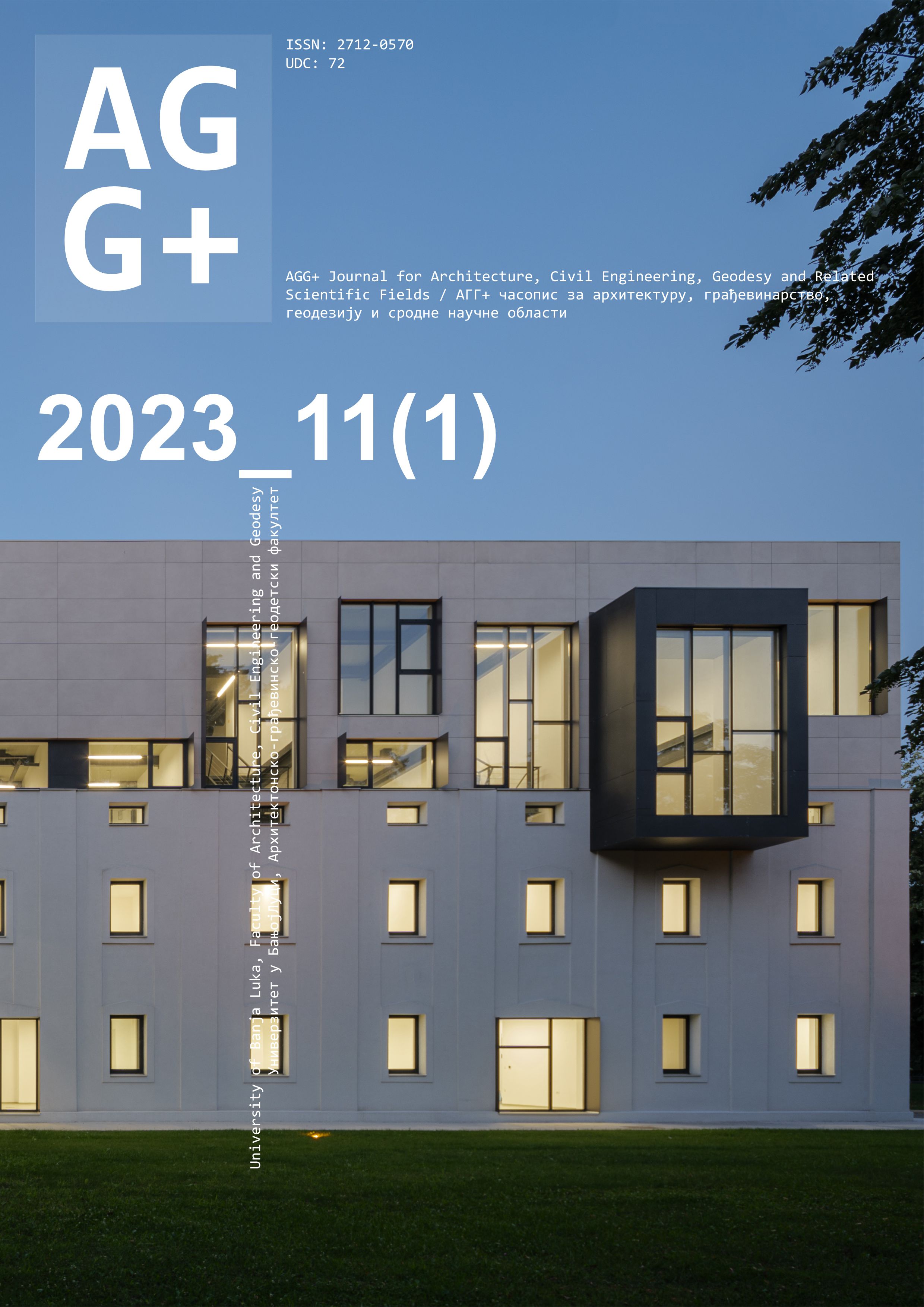INTERNAL EXTENSIONS: A CASE FOR THE REASSESSMENT OF THE ARCHITECTURAL PHENOMENON OF GREENHOUSE
Glasshouses, greenhouses, conservatories and orangeries – all types of buildings intended specifically for plant cultivation – represent a relatively recent addition to the histories and repertoires of horticulture, agriculture and architecture. During approximately three centuries of their notable existence, these structures managed to...
By Ognjen Šukalo, Maja Milić Aleksić, Slobodan Peulić
Determination of the Response Spectra of the Superstructure of Length l=3X63.0 m
During a seismic impact, the main emphasis is placed on the damage to bridge piers, which were isolated from the horizontal earthquake detector. Accordingly, when calculating the bridges, the reaction spectra obtained from the horizontal earthquake detector are used both for the piers and for the superstructure. The issue of seismic resistance of b...
By Nugzar Rurua, Boris Maisuradze, Ioseb Utmelidze
STABILITY CALCULATION OF IRREGULAR STRUCTURES WITH IRREGULAR DISORDER DURING SEISMIC IMPACT
From the point of view of modern construction, the damage to reinforced concrete large-panel and frame buildings is especially interesting. The construction of this building is very diverse. Their use has a short history. Therefore, the systematisation of damages and generalisation of results for such buildings is more difficult. Below are some sta...
By Zaza Jangidze
The Vitality of the Korčanica Memorial Landscape
The Korčanica Memorial Zone is a Yugoslav architectural heritage, one of the many World War II memorials and one of the rare preserved memorial sites in Bosnia and Herzegovina. The Korčanica memorial of the former Partisan hospital is presented as historical landscape research. Through multi-layered, primarily cultural, social and economic aspects ...
By Una Okilj, Luka Skansi
The Landscape of the Krajina Monuments
...
By Una Okilj, Igor Kuvač
Between Vision and Possibility – Industrial Architecture From the Socialist Period in Sarajevo
As a contribution to the research on the specificities of Yugoslav modernism, the development of industrial architecture in the City of Sarajevo after World War II is presented. When defining the architectural typology of industrial buildings during this period of development, examples of conceptual designs whose implementation was either fully or ...
By Maja Pličanić
Contribution to the Research on New Belgrade: The Unbuilt Projects and the Concepts of Nikola Dobrović
Architect Nikola Dobrović is best known in Serbia for his only constructed building in Belgrade, the complex of the State Secretariat of National Defense (DSNO), better known as the General Staff, today an endangered cultural heritage and a crumbling building with an uncertain future. However, his short-term engagement as the head of the Urban Plan...
By Jelica Jovanović
Modernism in the Petrified Landscape: Architecture in Montenegro 1945-1980
The subject of this paper is architectural heritage of the former Socialist Republic of Montenegro (SR Montenegro) in the period between 1945 and 1980, with particular emphasis on the role of stone in modern architecture. Stone, as a primordial building and design material, is present in post-war modernist Yugoslav architecture, especially during t...
By Slavica Stamatović Vučković, Danilo Bulatović
Planning Networks: Ernest Weissmann and the Internationalisation of Urbanism in Yugoslavia
...
By Vladimir Kulić
Yugoslav Modernism Beyond The City
...
By Mejrema Zatrić





